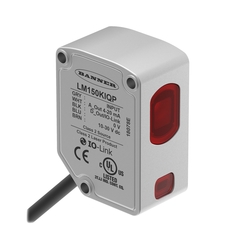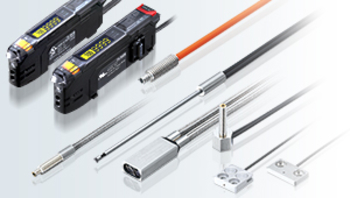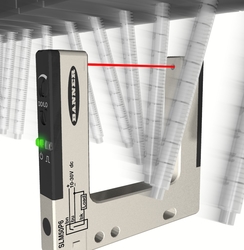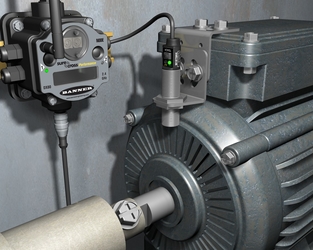

Photoelectric:
- Photoelectric sensors, also known as photo eyes, emit a beam of light that is used to detect the presence or absence of items and equipment or changes in surface conditions. When the emitted light is interrupted or reflected by the object, the change in light patterns is measured by a receiver and the target object or surface is recognized.
- Photoelectric sensors are very common in industrial manufacturing fields such as material handling, packaging, food and beverage, medical, and many others.

Distance Measurement:
- Laser diode sensors combine the alignment advantages of a visible sensing beam with the increased sensing range of a laser.
- Devices are available with either Class 1 or Class 2 lasers.

Ultrasonic:
- Ultrasonic sensors use sound waves rather than light, making them ideal for stable detection of uneven surfaces, liquids, objects in dirty environments.
- These sensors work well for applications that require precise measurements between stationary and moving objects.

Fiber Optic:
- Fiber optic sensors are small enough to fit in confined areas and can be positioned precisely where needed with flexible fibers.

Measuring Arrays:
- Using an array of closely spaced light beams, measuring light screens are designed for profiling, inspections, and process monitoring.

Registration Mark, Color and Luminescence Sensors:
- Registration mark sensors, also known as color contrast sensors, act as a color detector by identifying subtle color contrasts to inspect registration marks, using one, two or three color LEDs.

Slot Sensor and part verification array:
- Slot sensors, sometimes called optical fork sensors because of their “forked” shape, detect objects that pass between the two arms—one with the emitter, the other with the receiver.
- Sensing of objects as small as 0.30 mm.

Radar Sensor:
- Radar sensors use Frequency Modulated Continuous Wave (FMCW) radar to reliably detect moving or stationary targets, including cars, trains, and cargo in extreme weather conditions.
- These are also ideal for collision avoidance on board mobile equipment such as reach stackers, forklifts, and mining vehicles

Temperature & Vibration Sensors:
- Temperature sensors detect small differences between the temperature of an object and the surrounding ambient temperature
